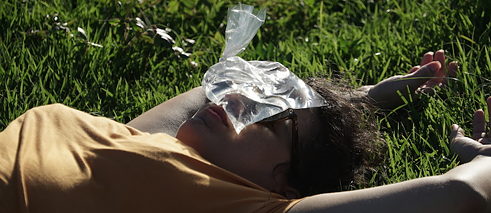Rio de Janeiro curators and artists carry out a series of workshops with the inhabitants of Vila Autódromo. This is a commitment to collective creation, which seeks to problematize the memories and wishes of participants. Here are some reflections about the first workshop, entitled 'Vila virtual.'
 Foto: © Igor Vidor
Foto: © Igor Vidor
It was 12:30 p.m. when we arrived at the first workshop of the Open sky project in Vila Autódromo. Penha was waiting to finish the rice with chicken we would soon be enjoying. We joined the residents in preparing for the event. We had Don Augusto's chairs and tables, Penha's and Luiz's dishes and silverware. Everything was taken to the church that quickly turned into a community hall.
Food is the prerequisite for a collective existence, and it brings along the most primitive sense of sharing. The construction of something common to everybody, even in the most stringent contexts, is always a utopia, as well as a shared sensitive experience that can be and is contributive, not to an identification of what is common, but to a unique path, full of multiple perceptions. In this sense, we proposed the 'Vila Virtual' workshop.
The cornerstone of its design was the willingness to meet and understand the concept of community-territory, a concept that integrates the founding discourse of the Museum of Removals (Museu das Remoções). As the Open sky project posed the fundamental question of how art is positioned regarding social struggles and human rights, it became necessary to create pathways of action based on a collective immersive scenario. When seeking to understand the performance of art with regard to social contexts, Ranciére defines art as “politics above all, due to the way a spatiotemporal sensorium is configured, determining ways of being together or separate, outside or inside, in the face of or in the middle of.”[1] The workshop elapsed combining cuts and projection within the Vila's present, which appears as a past-future status—that is, it simultaneously goes through the recent past of struggle against removal and the current struggle for the longed and longing future of the Vila.
The activities proposed occurred as an opening, a temporary field for the body within an imposed and regulated space. After lunch, we move on toward the shore of the lagoon that used to surround the whole Vila. The strip of asphalt, created for the Olympic urbanization, is now a continental desert: it separates the street that shapes the Vila from its fishing origins. It is there where we migrate. Physical exercises began, seeking first to un-discipline the bodies. It became clear immediately how we move according cultural mechanics. This was not only about retaking the territory, but retaking one's own body. Arms and legs were reconnecting to the driving force of non-verbal feeling. Direction of the process by Estúdio Guanabara and Terceira Margem established another communication system.
For the next exercise, we were called upon to find a common rhythm between everybody's gait. At this point, the varied speeds of each body turned their attention to the singularities that crossed them. We thus redefined a joint speed based on the reaction to the peculiarity of all the people involved.
After this emphatic non-conditioning of the body we lay down together, some on the bits of grass that remained, others on the ample roughness of the asphalt. We were invited to close our eyes. Seeing is not always a visual exercise. The suggested meditation brought calm upon us when small bags of fresh water were placed on the bodies. These came from the Objetos Relacionais research by Lygia Clark. Vila Autódromo's fight is full of nuances and layers. In the midst of the most brutal violence, for example, ways of counterattack imbued with some docility appear. These are strategies of struggle through empathy. Maybe, counter to this, the monstrosity the public-private partnership turned into has not been exploited. Going back to the bags of water, these have a similar ambiguity or counterpoint to what they appear to be. Freshness and uprooting, care and resentment, were all triggered there. After the transmutation of these sensitive substances, each person was given the option to break their bag and give back to the land what belongs to it.
We returned to the church and began the final activity: desire-designs, design-projections, design-audiences, design-collections, and design-metaphysics. There, on the tables provided by Don Augusto, through graphic language—either abstract or figurative—, impressions, trauma, and grievance emerged to finally build the 'Vila virtual.'
[1]RANCIÈRE, Jacques. A Política da Arte, p. 1.